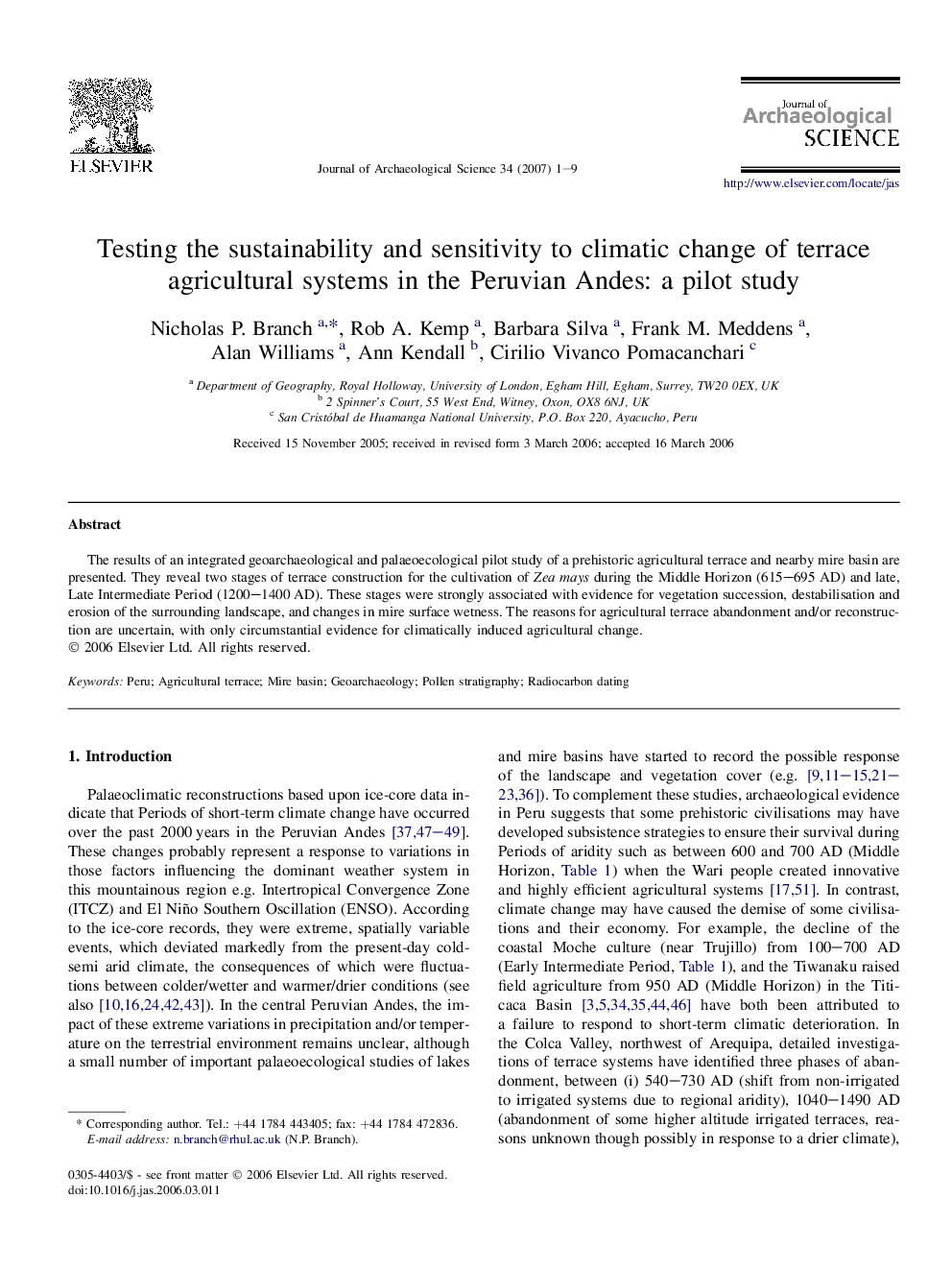| Article ID | Journal | Published Year | Pages | File Type |
|---|---|---|---|---|
| 1037754 | Journal of Archaeological Science | 2007 | 9 Pages |
Abstract
The results of an integrated geoarchaeological and palaeoecological pilot study of a prehistoric agricultural terrace and nearby mire basin are presented. They reveal two stages of terrace construction for the cultivation of Zea mays during the Middle Horizon (615–695 AD) and late, Late Intermediate Period (1200–1400 AD). These stages were strongly associated with evidence for vegetation succession, destabilisation and erosion of the surrounding landscape, and changes in mire surface wetness. The reasons for agricultural terrace abandonment and/or reconstruction are uncertain, with only circumstantial evidence for climatically induced agricultural change.
Related Topics
Physical Sciences and Engineering
Materials Science
Materials Science (General)
Authors
Nicholas P. Branch, Rob A. Kemp, Barbara Silva, Frank M. Meddens, Alan Williams, Ann Kendall, Cirilio Vivanco Pomacanchari,
